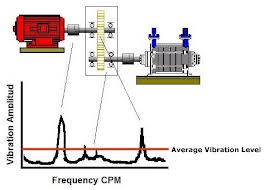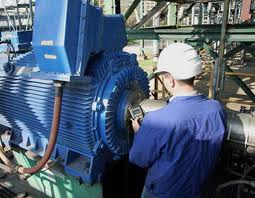Difference between revisions of "Vibration Analysis"
| Line 1: | Line 1: | ||
[[Category:Maintenance]]{{Knoppen}} | [[Category:Maintenance]]{{Knoppen}} | ||
[[File:Vibration Analysis.jpg|thumb|right|Vibration Analysis]] | |||
[[File:Vibration Analysis1.jpg|thumb|right|Vibration Analysis]] | |||
'''Vibration Analysis''' is used to detect the early precursors to machine failure, allowing machinery to be repaired or replaced before an expensive failure occurs.Vibration analysis, properly done, allows the user to evaluate the condition of equipment and avoid failures. Maintenance personnel can minimize unplanned downtime by scheduling needed repairs during normal maintenance shutdowns. It may be undertaken as a stand-alone process, or may be part of a machine section audit or comprehensive machine analysis. Regardless of the scope of the study, a similar process will be followed. The objective is established, a work plan is created, data is gathered using specific tools and sensors, and detailed analyses are carried out. | |||
Vibration Analysis Method, combines a number of established vibration analysis techniques with a machine specific statistical evaluation to supply easy to understand machine condition data. | |||
The fundamentals of vibration analysis can be understood by studying the simple mass–spring–damper model. Indeed, even a complex structure such as an automobile body can be modeled as a summation of simple mass–spring–damper models. The mass–spring–damper model is an example of a simple harmonic oscillator. The mathematics used to describe its behavior is identical to other simple harmonic oscillators such as the RLC circuit. | |||
Latest revision as of 06:52, 31 January 2013
Vibration Analysis is used to detect the early precursors to machine failure, allowing machinery to be repaired or replaced before an expensive failure occurs.Vibration analysis, properly done, allows the user to evaluate the condition of equipment and avoid failures. Maintenance personnel can minimize unplanned downtime by scheduling needed repairs during normal maintenance shutdowns. It may be undertaken as a stand-alone process, or may be part of a machine section audit or comprehensive machine analysis. Regardless of the scope of the study, a similar process will be followed. The objective is established, a work plan is created, data is gathered using specific tools and sensors, and detailed analyses are carried out.
Vibration Analysis Method, combines a number of established vibration analysis techniques with a machine specific statistical evaluation to supply easy to understand machine condition data.
The fundamentals of vibration analysis can be understood by studying the simple mass–spring–damper model. Indeed, even a complex structure such as an automobile body can be modeled as a summation of simple mass–spring–damper models. The mass–spring–damper model is an example of a simple harmonic oscillator. The mathematics used to describe its behavior is identical to other simple harmonic oscillators such as the RLC circuit.

